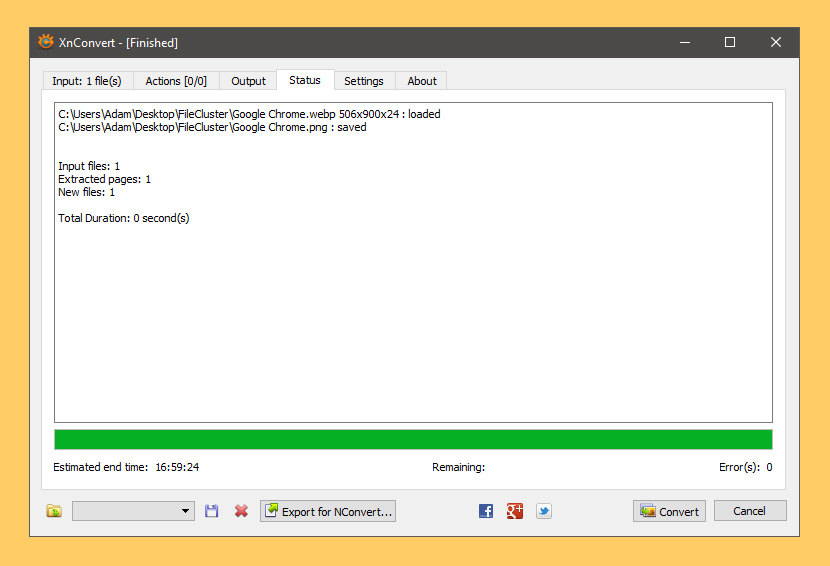

- #NCONVERT VERSUS XNCONVERT SOFTWARE#
- #NCONVERT VERSUS XNCONVERT CODE#
- #NCONVERT VERSUS XNCONVERT SERIES#
That's the crux of the matter: You'd need a way to tell XnView (or nConvert) to generate a common palette for a batch of files. Since we're dealing with letters, sharing them is probably out of the question, but perhaps you could provide one or more samples with similar specs?

I'll have to check if nConvert's transpcolor option can set a single color to transparent in truecolor PNGs.
#NCONVERT VERSUS XNCONVERT SOFTWARE#
As a workaround, I use GIF animation software for reducing the colors to a global palette, and then I export the frames to individual images. That's the crux of the matter: You'd need a way to tell XnView (or nConvert) to generate a common “ SuperPalette” for a batch of files. In suitable circumstances possibly another way of batch converting images to have transparency, and possibly better as a script that can be reused directly anytime.Ĭday wrote:That problem doesn't arise with the GUI solutions you posted, I presume.
#NCONVERT VERSUS XNCONVERT CODE#
I imagine that there are probably alternative, and possibly better, NConvert solutions using the available code options above. That problem doesn't arise with the GUI solutions you posted, I presume. Even when the background colour was 255 255 255, the paletted value wasn't pure white. It seemed to be necessary to determine the actual paletted colour in a test conversion so that that value could be set, the actual value depending on the bit depth valued entered. That seemed to work well for the letters I tested initially which were black and white scans (so no need to use 256 colours really) but failed when I tested a colour scan: the problem seemed to be that when the image was converted to paletted colour, nominally white canvas wasn't converted to pure white even when I reduced the colour depth right down to 8 colours. At a quick look the following options support transparency:Ĭode: Select all nconvert -32bits -colors 256 -transpcolor 255 255 255 *.PNG That could be useful if the need arose regularly, although that isn't my present use case. Having converted a letter and now done a further test I'm not sure if the result is actually better.Īfter posting yesterday, as an afterthought I checked the NConvert help file and found that it might be possible to create a batch file that would convert scans to transparent in a single operation. I'd done some tests using layers in Paint.NET which I've worked with a little recently, but then wondered if starting with a transparent foreground image of the letter might produce a better result, or have other advantages. I thought it might look better if the passages to be marked were highlighted by a single coloured block.
#NCONVERT VERSUS XNCONVERT SERIES#
My considered use case arises directly from my freely-admitted perfectionist personality trait: I need to prepare a file containing copies of a series of letters in which carefully selected text is highlighted I could of course easily use the highlighting tool in Adobe Acrobat, but I noticed that it can leave gaps between the lines marked. Thank you for your customary detailed response: not only possible, but a choice of methods.

XnView Classic: Set the transparency value to palette entry ( Tools → Options.

This method basically works like the Fi lter → PhotoMasque add-on: You have to prepare a (grayscale) mask which is then “superimposed” on the input images. Supported output formats: BMP, ICO, PNG, TGA, … → Actions » Add action → Image → Add mask: mask.png) XnView MP: Use mask as alpha ( Tools → Batch convert.Do you have a particular use case in mind?


 0 kommentar(er)
0 kommentar(er)
